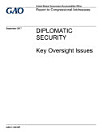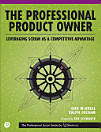Tame, Messy and Wicked Risk Leadership
David Hancock
Mac 2017 · Taylor & Francis
Kitabu pepe
114
Kurasa
family_home
Kimetimiza masharti
info
reportUkadiriaji na maoni hayajahakikishwa Pata Maelezo Zaidi
Kuhusu kitabu pepe hiki
The general perception amongst most project and risk managers that we can somehow control the future is, says David Hancock, one of the most ill-conceived in risk management. The biggest problem is how to measure risks in terms of their potential likelihood, their possible consequences, their correlation and the public's perception of them. The situation is further complicated by identifying different categories of problem types; Tame problems (straight-forward simple linear causal relationships and can be solved by analytical methods), and 'messes' which have high levels of system complexity and have interrelated or interdependent problems needing to be considered holistically. However, when an overriding social theory or social ethic is not shared the project or risk manager also faces 'wickedness'. Wicked problems are characterised by high levels of behavioural complexity, but what confuses real decision-making is that behavioural and dynamic complexities co-exist and interact in what is known as wicked messes. Tame, Messy and Wicked Risk Leadership will help professionals understand the limitations of the present project and risk management techniques. It introduces the concepts of societal benefit and behavioural risk, and illustrates why project risk has followed a particular path, developing from the basis of engineering, science and mathematics. David Hancock argues for, and offers, complimentary models from the worlds of sociology, philosophy and politics to be added to the risk toolbox, and provides a framework to understand which particular type of problem (tame, messy, wicked or messy and wicked) may confront you and which tools will provide the greatest potential for successful outcomes. Finally he introduces the concept of 'risk leadership' to aid the professional in delivering projects in a world of uncertainty and ambiguity. Anyone who has experienced the pain and blame of projects faced with overruns of time or money, dissatisfied stakeholders or basic failure, will welcome this imaginative reframing of some aspects of risk management. This is a book that has implications for the risk management processes, culture, and outcomes, of large and complex projects of all kinds.
Kuhusu mwandishi
Dr David Hancock is Head of Construction for the UK Cabinet Office. Previously he was Head of Project Risk for London Underground, part of Transport for London. He has run his own consultancy, and was Director of Risk and Assurance for the London Development Agency (LDA) - under both Ken Livingstone and Boris Johnson's leadership - with responsibilities for risk management activities and audit for all of the Agency's and its partner's programmes. Prior to this for 6 years he was Executive Director with the Halcrow Group, responsible for establishing and expanding the business consultancy group. He has a wide breadth of knowledge in project management and complex projects developed over more than 20 years and extensive experience in opportunity and risk management, with special regard to people and behavioural aspects. He is a board director with Alarm (The National Forum for Risk Management in the Public Sector), a co-director of the managing partners' forum risk panel, member of the programme committee for the Major Projects Association and a visiting Fellow at Cranfield University in their School of Management.
Kadiria kitabu pepe hiki
Tupe maoni yako.
Kusoma maelezo
Simu mahiri na kompyuta vibao
Sakinisha programu ya Vitabu vya Google Play kwa ajili ya Android na iPad au iPhone. Itasawazishwa kiotomatiki kwenye akaunti yako na kukuruhusu usome vitabu mtandaoni au nje ya mtandao popote ulipo.
Kompyuta za kupakata na kompyuta
Unaweza kusikiliza vitabu vilivyonunuliwa kwenye Google Play wakati unatumia kivinjari cha kompyuta yako.
Visomaji pepe na vifaa vingine
Ili usome kwenye vifaa vya wino pepe kama vile visomaji vya vitabu pepe vya Kobo, utahitaji kupakua faili kisha ulihamishie kwenye kifaa chako. Fuatilia maagizo ya kina ya Kituo cha Usaidizi ili uhamishe faili kwenye visomaji vya vitabu pepe vinavyotumika.








